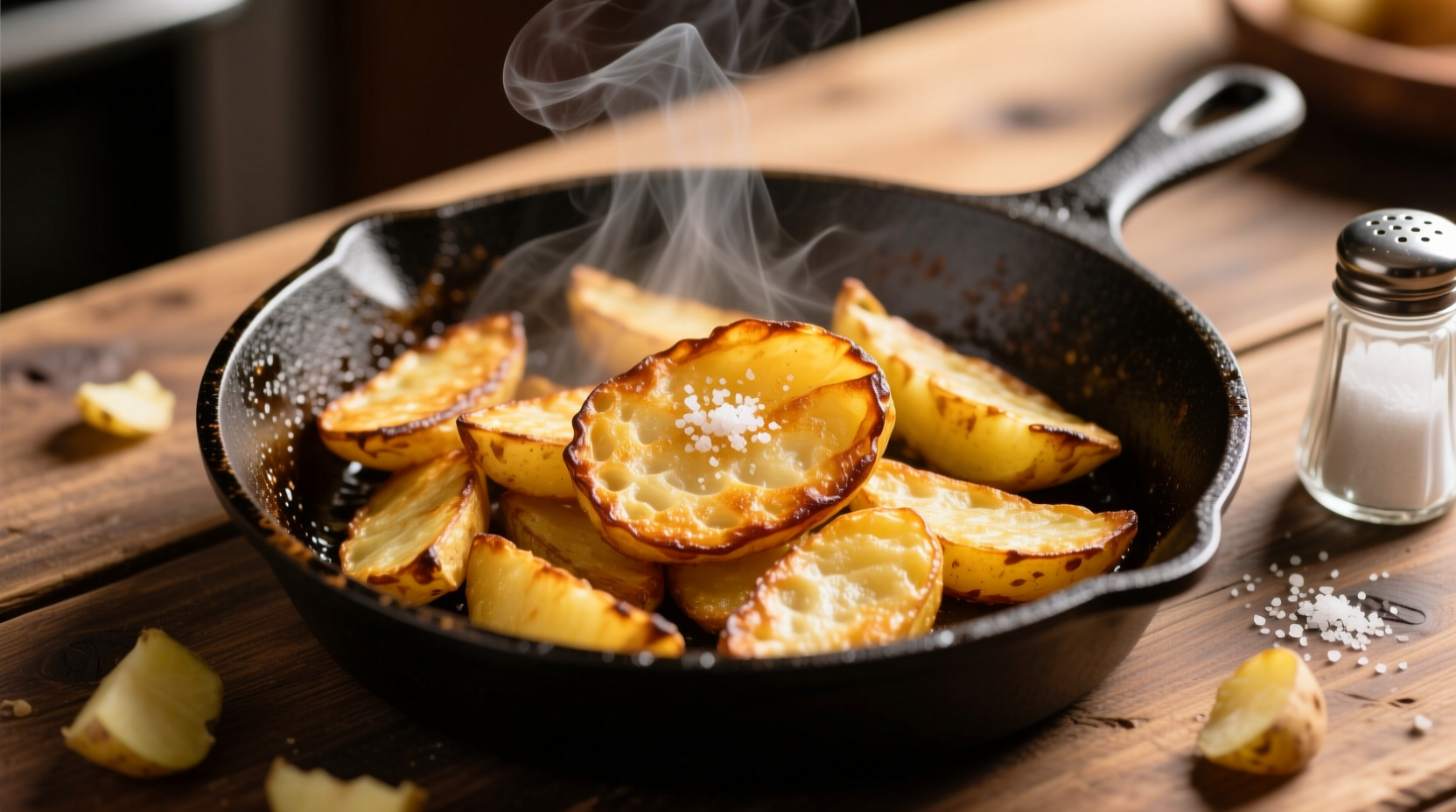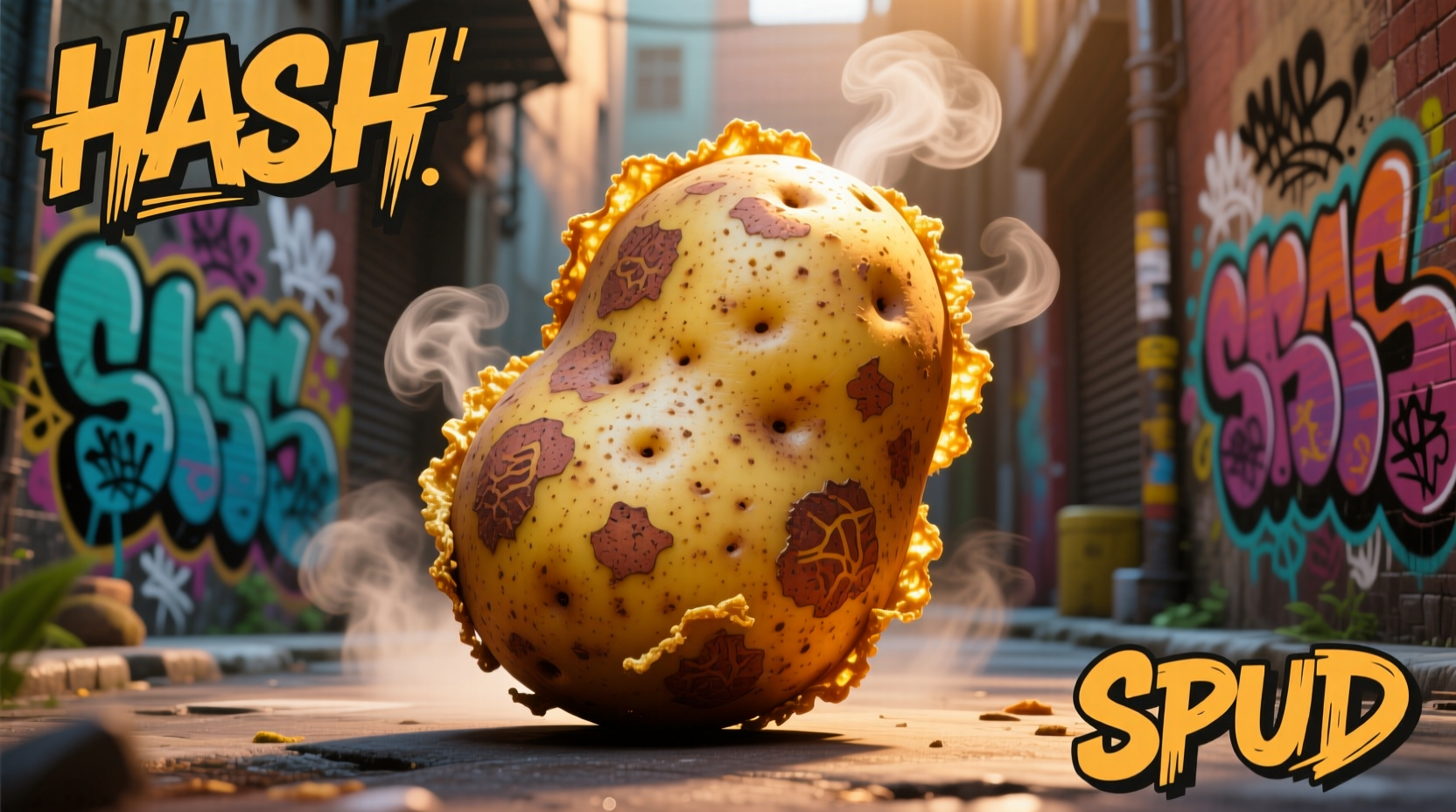Nothing transforms a simple breakfast into a memorable meal quite like perfectly executed hash potatoes. Forget the soggy, uneven versions you've struggled with—mastering this humble side dish requires understanding potato science, moisture control, and precise heat management. Whether you're cooking for family weekend brunches or aiming to replicate diner-quality results at home, this guide delivers professional techniques that guarantee crispy, golden hash browns every time.
The Science Behind Perfectly Crispy Hash Browns
Understanding the chemistry of potatoes separates decent hash browns from extraordinary ones. Potatoes contain starch granules that, when exposed to heat and moisture, create a sticky situation—literally. The key is removing excess surface moisture while preserving enough internal moisture to prevent dryness. Russet potatoes, with their high starch content (about 22% according to USDA agricultural research), provide the ideal balance for achieving that coveted crispy-yet-fluffy texture.
| Potato Variety | Starch Content | Best For Hash Browns? | Moisture Management Tip |
|---|---|---|---|
| Russet (Idaho) | 20-22% | ★★★★★ | Soak in cold water 10 minutes before cooking |
| Yukon Gold | 16-18% | ★★★☆☆ | Add 1 tbsp cornstarch per 2 potatoes |
| Red Potatoes | 14-16% | ★☆☆☆☆ | Not recommended for traditional hash browns |
Essential Preparation Techniques You're Probably Missing
Most home cooks skip the critical moisture removal step that makes or breaks hash browns. After shredding your potatoes, place them in a clean kitchen towel and squeeze firmly over the sink—this removes approximately 30% of the surface moisture that would otherwise steam your potatoes instead of frying them. For even better results, professional chefs recommend soaking shredded potatoes in cold water for 10 minutes, then draining and drying thoroughly. This process removes excess starch that causes potatoes to stick and become gummy.

Temperature Control: The Professional's Secret Weapon
Heat management separates amateur attempts from restaurant-quality results. Start with your skillet at medium-high heat (350-375°F), then add enough oil to create a thin layer across the bottom. The oil should shimmer but not smoke. When adding potatoes, press them into an even layer about 1/2 inch thick—this contact with the hot surface creates maximum crispiness. Resist the urge to stir! Let the potatoes cook undisturbed for 4-5 minutes until a golden crust forms, then flip in sections using a spatula.
Common Mistakes and How to Fix Them
Soggy hash browns? You likely didn't remove enough moisture or overcrowded the pan. Cook in batches if necessary, giving potatoes space to crisp. Sticking to the pan? Your skillet wasn't hot enough before adding potatoes, or you tried flipping too soon. Burning before cooking through? Heat was too high—medium-high is the sweet spot. Remember that cast iron retains heat better than non-stick pans, making it ideal for consistent browning.
Regional Variations Worth Trying
While classic American hash browns dominate breakfast menus, regional variations offer exciting flavor profiles. In Canada, "poutine-style" hash browns incorporate cheese curds and gravy. German "kartoffelpuffer" adds egg and onion for a pancake-like texture. For authentic diner-style results, many professional kitchens follow a technique developed in the 1930s when hash browns became popular in American diners—a timeline documented by the Smithsonian National Museum of American History.
Advanced Techniques for Next-Level Results
For truly exceptional hash browns, try the double-fry method used by top breakfast restaurants. First, par-cook shredded potatoes in 325°F oil for 2 minutes, then drain and cool. When ready to serve, fry again in 375°F oil for 3-4 minutes. This technique, verified by culinary researchers at the Culinary Institute of America, creates superior crispiness while maintaining perfect interior texture. Alternatively, finish under a broiler for 60 seconds to achieve that professional golden-brown color without overcooking.
Serving and Storage Tips
Serve immediately for best results, as hash browns lose crispness quickly. If you must hold them, keep in a 200°F oven on a wire rack—never covered, which traps steam. Leftovers can be stored in an airtight container for up to 3 days, but reheating requires care: use a skillet over medium heat rather than a microwave to restore crispness. According to food safety guidelines from the USDA Food Safety and Inspection Service, properly stored cooked potatoes remain safe for consumption for 3-4 days when refrigerated.











 浙公网安备
33010002000092号
浙公网安备
33010002000092号 浙B2-20120091-4
浙B2-20120091-4